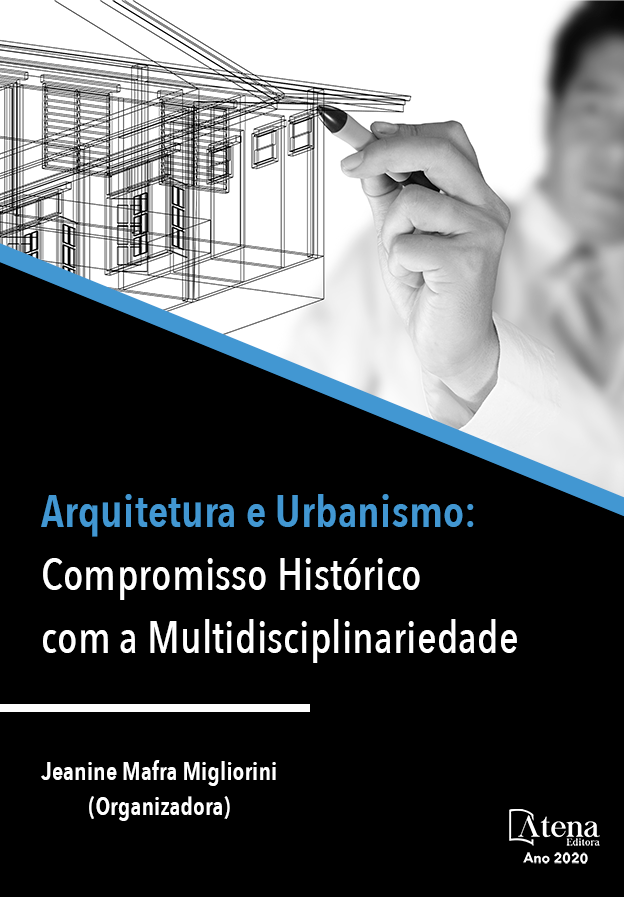
A FUNÇÃO RESIDENCIAL NO CAMPUS DA UNIVERSIDADE FEDERAL RURAL DO RIO DE JANEIRO (UFRRJ)
A pesquisa identifica e analisa os projetos originais de residências para professores, alunos e funcionários da Universidade Federal Rural do Rio de Janeiro (UFRRJ), elaborados no período 1938-1948. Utiliza-se como base teórica o conceito de habitar (Heidegger, Norberg-Schulz, Pallasmaa etc.) para compreender o modus vivendis dos ocupantes originais do campus. Identificam-se na documentação histórica da UFRRJ, atualmente em processo de conservação preventiva, os projetos originais dessas edificações visando a produção de plantas humanizadas e modelos 3D das propostas originais. São realizadas análises comparativas entre os projetos originais, os estados de conservação e utilização atuais das edificações remanescentes. A idéia de propor a presente pesquisa surgiu a partir do projeto de conservação preventiva e digitalização do acervo de desenhos arquitetônicos originais da construção do Campus Seropédica da UFRRJ, apoiado pela FAPERJ (2013-2016). A iniciativa viabilizou a construção do Laboratório de Conservação e Restauro de Documentos (LabDoc), originalmente vinculado ao Centro de Memória da UFRRJ, cujo acervo constitui uma rica fonte de pesquisa sobre o campus Seropédica, guardando os projetos que lhe deram origem, especialmente os residenciais. A pesquisa viabilizou a detecção e a compreensão das intenções originais do projeto arquitetônico do campus, especialmente no tocante à habitação. No presente artigo, serão apresentados alguns resultados parciais da pesquisa que se restringirão à análise comparativa entre três tipologias residenciais do Campus da UFRRJ: as casas de Reitor, trabalhador e funcionário.
A FUNÇÃO RESIDENCIAL NO CAMPUS DA UNIVERSIDADE FEDERAL RURAL DO RIO DE JANEIRO (UFRRJ)
-
DOI: 10.22533/at.ed.7642008104
-
Palavras-chave: Documentação; Conservação; Patrimônio Cultural
-
Keywords: Documentation, Conservation; Cultural Heritage
-
Abstract:
The research identifies and analyzes the original projects of residences for teachers, students, and employees of the Federal Rural University of Rio de Janeiro (UFRRJ), drawn up in the period 1938-1948. The concept of inhabiting (Heidegger, Norberg-Schulz, Pallasmaa etc.) is used as a theoretical basis to understand the modus vivendis of the original occupants of the campus. The original projects of these buildings are identified in the historical documentation of UFRRJ, currently in the process of preventive conservation, aiming at the production of humanized plants and 3D models of the original proposals. Comparative analyses are carried out between the original projects, the current conservation and use states of the remaining buildings. The idea of proposing this research arose from the preventive conservation project and digitization of the collection of original architectural drawings of the construction of the Seropédica Campus of UFRRJ, supported by Research Support Foundation for the State of Rio de Janeiro (FAPERJ) (2013-2016). The initiative enabled the construction of the Laboratory of Conservation and Restoration of Documents (LabDoc), originally linked to the Memory Center of UFRRJ, whose collection constitutes a rich source of research on the Seropédica campus, keeping the projects that gave rise to it, especially the residential ones. The research enabled the detection and understanding of the original intentions of the architectural design of the campus, especially about housing. In this article, some partial results of the research will be presented that will be restricted to the comparative analysis between three residential typologies of the UFRRJ Campus: the houses of Dean, worker, and employee.
-
Número de páginas: 16
- João Pedro Soares Ferreira
- Luiz Philipe Santos da Silva
- Jonathan Trindade
- Claudio Antonio Santos Lima Carlos


